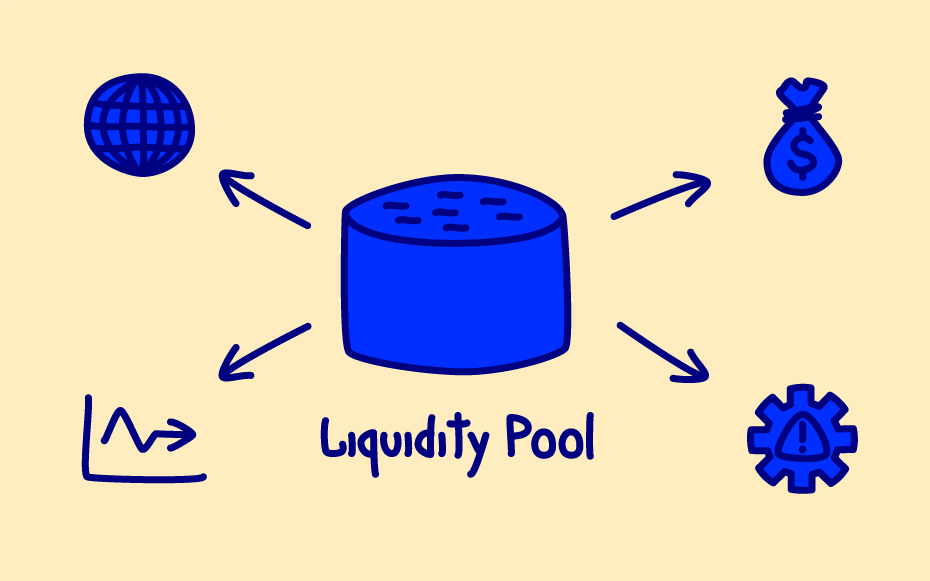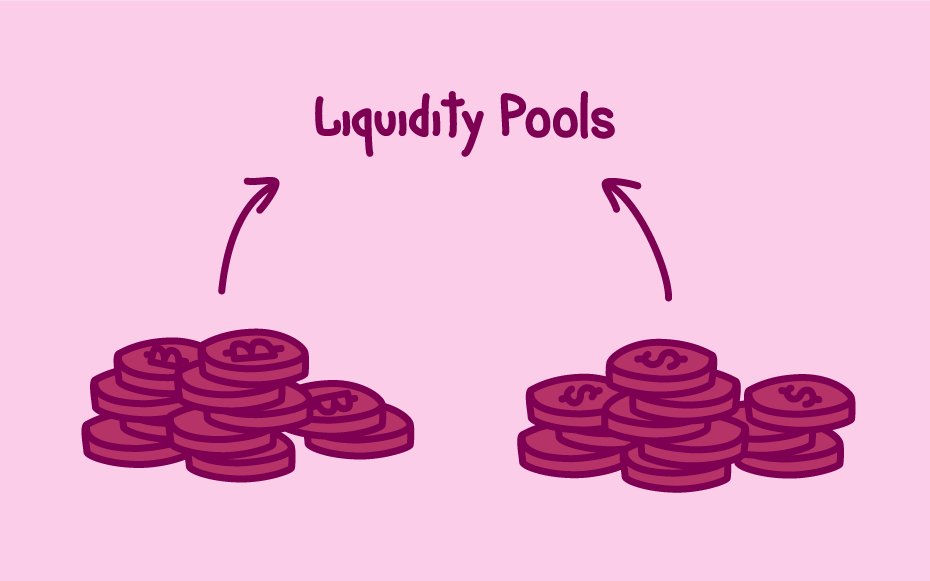The cryptocurrency landscape has evolved significantly with the emergence of decentralized finance (DeFi). One of the most intriguing innovations within this domain is the advent of liquidity pools, which power the engine of decentralized exchanges (DEXs). This article offers an in-depth exploration of liquidity pools, their mechanics, and their transformative impact on decentralized trading.
1. Background: The Birth of Liquidity Pools
The early days of cryptocurrency trading were dominated by centralized exchanges. These platforms operated using order books, where buy and sell orders are matched. However, this mechanism had its drawbacks. Order books in smaller, less popular tokens often suffered from low liquidity, leading to high spreads and price manipulation. Liquidity pools emerged as a solution to these challenges, offering a decentralized alternative.
2. The Mechanics: How Do Liquidity Pools Operate?
Automated Market Makers (AMMs): At the heart of the liquidity pool system is the AMM—a novel concept replacing the traditional order book. Instead of matching buy and sell orders, the AMM uses a mathematical formula to determine the price of assets within a pool. A popular model is the x*y=k formula, where x and y represent the quantities of two tokens, and k is a constant.
Token Interaction: When users wish to trade, they interact with the pool. If someone buys Token A using Token B, Token A's quantity decreases while Token B's quantity increases, resulting in a new price set by the AMM's formula.

3. Benefits: The Rise of Decentralized Trading
Open Access: DEXs, powered by liquidity pools, are permissionless. Without intermediaries, this promotes a more inclusive financial system where anyone with internet access can participate.
Yield Farming: By staking tokens in liquidity pools, users can earn transaction fees or other rewards, creating an additional income stream for crypto holders.
Enhanced Market Efficiency: Arbitrageurs are attracted to price discrepancies in the AMM system, driving prices towards equilibrium across the market.
4. Challenges: The Roadblocks Ahead
Impermanent Loss: As tokens' relative prices fluctuate, liquidity providers might experience a phenomenon called "impermanent loss", where they might have been better off simply holding their tokens outside the pool.
Smart Contract Flaws: DeFi relies on code. If there's a vulnerability in the smart contract governing a liquidity pool, it might be exploited, leading to loss of funds.
Price Slippage: Particularly for large trades, the final amount received might be less than expected due to price adjustments made by the AMM.
5. Pioneering Platforms: Innovators in the Space
Uniswap: A trailblazer, Uniswap's simple interface and robust mechanism have made it a top choice for many in the DeFi space.
Balancer: By supporting pools with multiple tokens, Balancer introduced flexibility and complexity, catering to more sophisticated strategies.
Curve Finance: Focusing on stablecoin trades, Curve aims to provide minimal slippage and reduced impermanent loss.

6. Future Horizons: The Evolution of Liquidity Pools
Inter-blockchain Liquidity: As the blockchain ecosystem expands, there's a growing need for liquidity that spans multiple networks. Cross-chain platforms could revolutionize how liquidity pools operate.
Smarter AMMs: With advancements in machine learning and AI, future AMMs might predict market movements and adjust their formulas accordingly.
Institutional Participation: As DeFi gains legitimacy, more institutional players might engage with liquidity pools, injecting large volumes of capital and reshaping the ecosystem.
7. Real-world Use Cases and Impact
Beyond trading, liquidity pools are finding applications in other domains:
Price Feed Mechanisms: Projects like Chainlink leverage decentralized price feeds, often sourced from liquidity pools, to provide accurate, tamper-proof data for smart contracts.
Collateralized Lending: Protocols like Aave use liquidity pools to facilitate lending and borrowing, offering users a decentralized alternative to traditional banks.
Conclusion
Liquidity pools are more than just a technological innovation; they represent a shift in how we conceptualize trading and financial services. By democratizing access and promoting decentralization, they challenge traditional financial norms and point towards a more inclusive future for global finance. As challenges are overcome and the technology matures, liquidity pools may well become the default mechanism for a vast array of financial applications.
